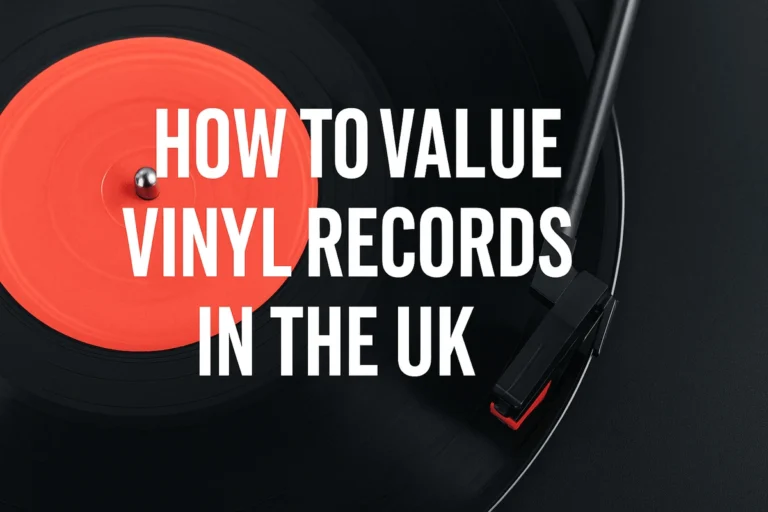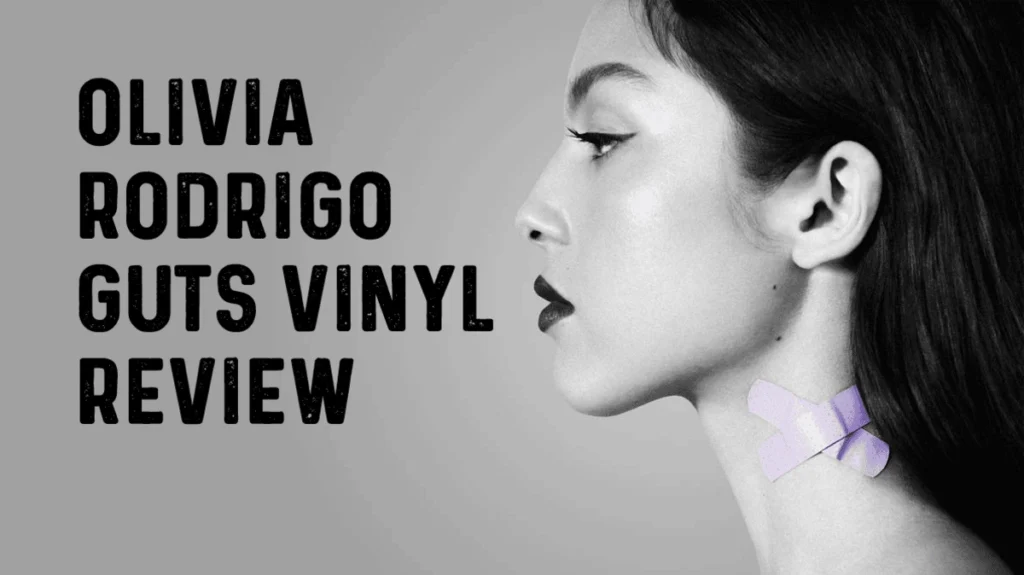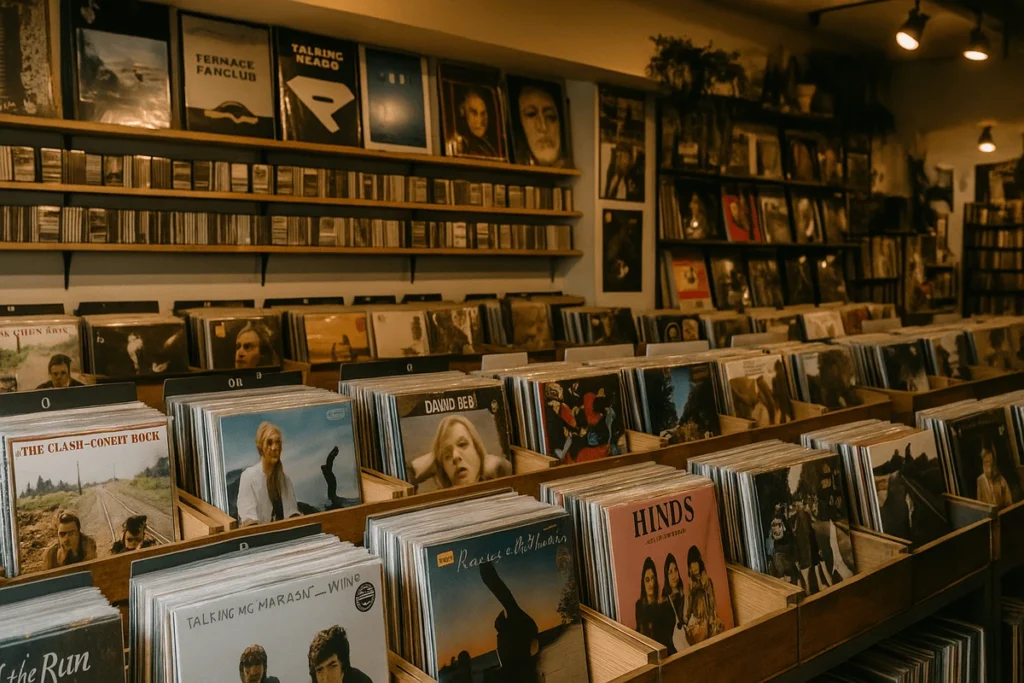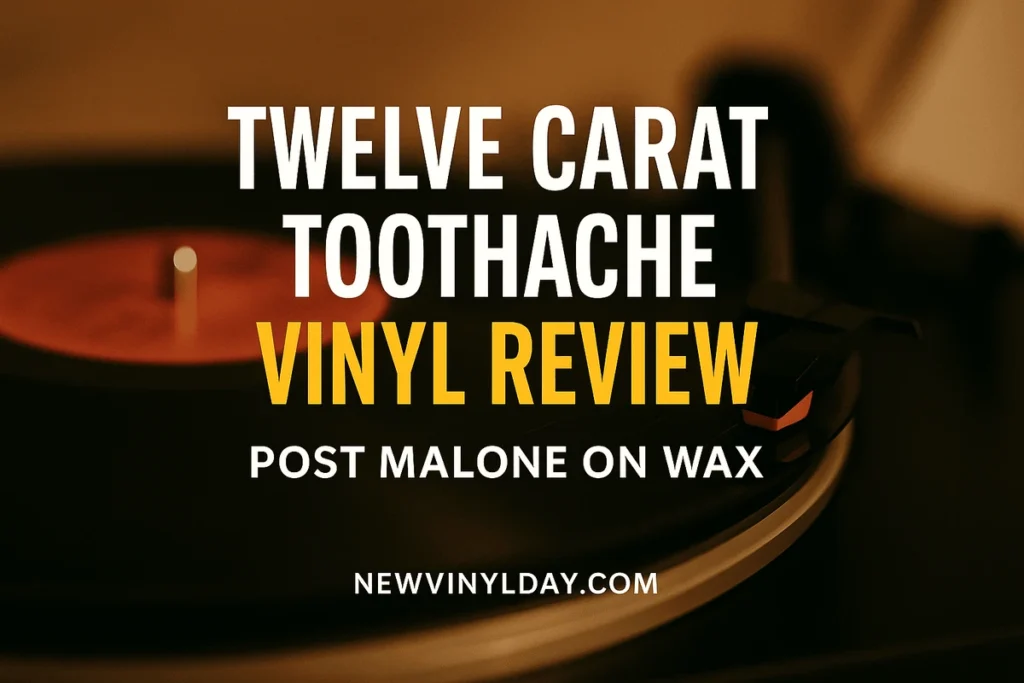Intro: How to Value Vinyl Records in the UK in 2025
Want to value vinyl records UK collectors care about? You’re not alone. In 2024, the UK vinyl market hit £146 million, its best since the ’90s. As more people dust off old crates or list collections online, knowing how much your records are worth can make a big difference.
This guide breaks it down clearly: what affects vinyl record prices UK, where to research value, and how to sell without getting ripped off. Whether you’re a new collector, a curious seller, or just wondering if that weird reggae 12″ is rare, this one’s for you.
What Affects Vinyl Record Prices in the UK?
## Pressing & Edition: Key to Value Vinyl Records UK
This is where serious collectors start. Not all records are equal, even if they look identical. Some pressings are worth £5, others £500.
The most valuable records are often first pressings, especially if they predate an artist’s fame or come from a notable label (like Factory, Island, Rough Trade, or Vertigo).
UK first pressings tend to carry more weight with British collectors. Matrix numbers etched into the dead wax are the giveaway — look for codes like A1/B1 or 1U/1U.
Here’s an example: a 1973 first pressing of Dark Side of the Moon on Harvest with a solid blue triangle label? That can fetch £300+. A 2016 reissue with the same art? £20 on a good day.
Collectors also pay attention to:
- Sleeve printing location (UK vs EU)
- Typography on labels
- Insert or poster inclusion
- Label colour changes across pressings
Want help? Just punch the catalogue number into Discogs and start comparing. You’ll learn fast. If you’re unsure how to read matrix numbers or spot pressing differences, check out my Technics 1200MK7 review, which includes tips on playing older records cleanly without damage.
Essential Tools to Value Vinyl Records UK
If you are serious about determining the value of your vinyl records, you will need to use the same tools the professionals use:
- Discogs – The best place to determine pressing details, prices, and compare versions. Advanced search can help you find exact variants.
- Popsike – If you want auction sales prices and trends, you want to use Popsike, which tracks actual sale prices at online auctions, largely from eBay. This is as close to what buyers paid as you will find.
- eBay sold listings – Less sophisticated than Popsike, but still useful.
- Vinyl communities – The Steve Hoffman forum and Reddit‘s r/vinyl can be good places to get opinions.
These tools are free. You just need a bit of time and curiosity. Comparing multiple sales is better than relying on a single high asking price.
Record Condition and Vinyl Valuation UK Standards
Let’s not sugar-coat it, condition matters. A rare record in bad shape is like a vintage Jaguar with no engine. It might look cool, but it won’t take you far.
UK buyers tend to grade conservatively, and rightly so. Scratches, warps, or noisy playback tank value fast. A copy graded NM (Near Mint) might fetch £80. The same record in VG (Very Good) condition? Maybe £25.
Here’s a quick guide to how condition affects price:
| Grade | What it Means | Price Impact |
|---|---|---|
| Mint (M) | Sealed, untouched | Top price |
| Near Mint (NM) | Played once or twice, flawless | 90–100% value |
| Very Good+ (VG+) | Light marks, no skips | 60–80% value |
| Very Good (VG) | Some wear, plays through | 30–50% value |
| Good (G) | Heavy wear, noise, skips | 10–20% value |
It‘s also a good idea to take sleeve condition into account. Gatefolds with sharp spines, original stickers and lyric inserts can get you some real value. Collectors want the entire package, not just the music.
If you’re selling online, be honest and transparent. Disclose everything: scuffs, warps, dull sound, and even a nasty, musty smell. You might cheat a buyer with an overgrading, but you won‘t ever see that repeat buyer again. Also consider the following:
- Fading on the sleeve
- Water damage
- Writing or price stickers
- Split seams or tears
All of these can dent value, sometimes significantly. A fully intact copy in VG+ can outsell a NM vinyl with a trashed cover.
Common Mistakes When Valuing Vinyl Records
- Assuming all old records are valuable — They’re not. Most mass-produced pop albums from the ’70s aren’t worth much unless they’re sealed or have rare variants.
- Ignoring pressing details — That 1969 Led Zeppelin may be worth £20… unless it’s the turquoise-letter first press. Then it’s £1000+.
- Overgrading condition — Everyone thinks their record is “excellent.” Use a bright light. Be harsh.
- Taking asking prices as gospel — A seller can ask £200. That doesn’t mean it’ll sell.
- Skipping matrix numbers — The devil’s in the dead wax. Get familiar with how matrix runouts identify pressings.
Case Study: Valuing One of My Own Records
Once upon a time, I found an original vinyl copy of Unknown Pleasures by Joy Division in one of those boxes of random stuff at a car boot sale. It was £5. It appeared to be a run–of–the–mill copy black sleeve, no barcode.
Upon closer inspection, it had the thick textured cover and the correct matrix info (FACT 10 A1/B1). It was an original pressing. That version? Easily £200+ in VG+ condition. A reissue with a barcode? About £25. The difference? All in the tiny details. The moral of the story? Always check the runout grooves. Always look through a good crate at a car boot.
Genre, Rarity & Demand: What Drives Vinyl Record Prices UK
Some genres always do better than others. UK collectors love certain niches:
- Northern Soul 45s – obscure labels, heavy demand
- UK punk – especially on early independent labels
- British reggae & dub – Studio One, Trojan, Greensleeves
- 1990s jungle and hardcore – white labels, pirate radio staples
- Classic rock – Led Zep, Queen, Floyd, Sabbath first pressings
- Indie rarities – limited Rough Trade runs, early Arctic Monkeys, etc.
Rarity is only valuable when there’s demand. A 1981 Bulgarian disco LP might be super rare, but if no one wants it, it won’t sell. That’s why Popsike and Discogs sold listings are useful; they show what’s moving.
Some obscure private press folk albums, like ones made in 100-copy runs by students in the ’70s, now go for hundreds. Others? Still collecting dust.
Pay attention to what’s hot locally. A record that’s lukewarm in the US could be gold in the UK. And trends shift five years ago, no one was paying big money for 2000s emo. Now? First pressings of Brand New and Thursday fetch decent prices.
Where to Sell and Value Vinyl Records UK Collections
eBay UK
Great for rare or hyped titles. Set a Buy It Now price if you know the value, or use auctions for in-demand records. Add £4–5 to cover secure postage. Use tracked shipping, always. Take multiple photos, front, back, labels, and dead wax. Mention all flaws.
Discogs
Brilliant for specific pressings. Expect more questions from buyers but fewer returns. The feedback system keeps sellers accountable. You’ll need to keep your grading sharp.
Local Record Shops
Walk in with a box. Walk out with cash. No hassle, but expect 30–50% of resale value. That’s fair: shops have overheads. If you want fast money and don’t mind getting less, this is your move.
Don’t be afraid to ask questions. Most shops will give you a sense of what’s worth selling and what might be better donated.
Record Fairs
Fun, full of die-hards, and often underrated as sales hubs. If you’ve never been to one, you’re missing out. Try VIP Record Fairs for a full UK schedule.
Bring change, plastic sleeves, and maybe a small crate to keep stock organised. You’ll meet proper collectors, who can be both a thrill and a test. Be ready to negotiate.
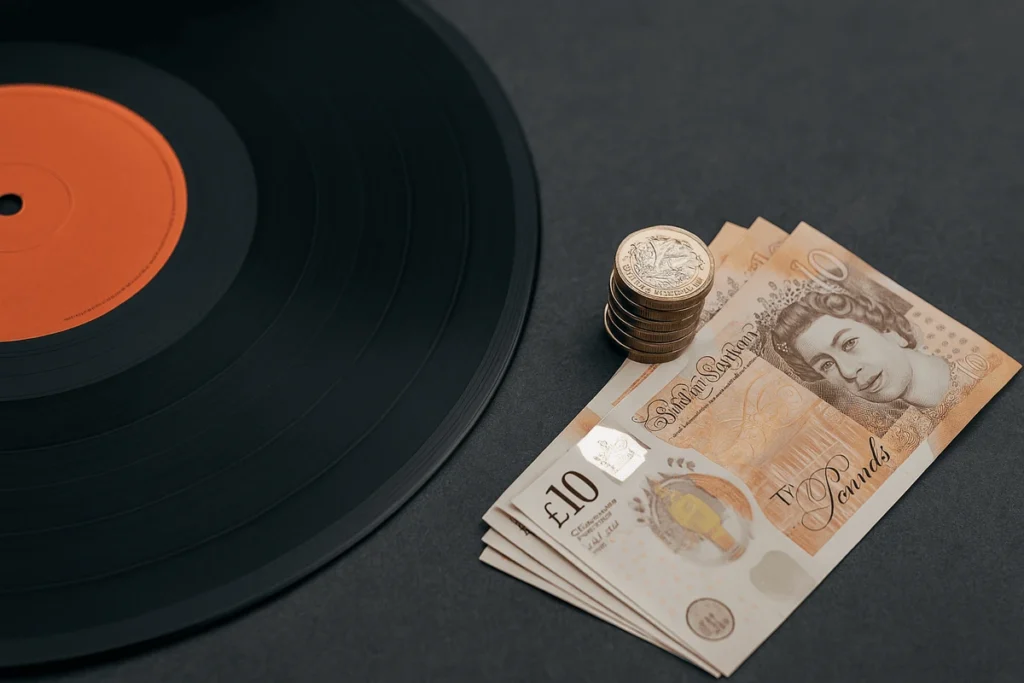
Fake Records: How Bootlegs Distort Vinyl Record Prices UK
The rise of fakes has made it harder to value vinyl records UK accurately. Some modern bootlegs look slick. Heavy 180g vinyl, good repro sleeves — but they’re still unofficial.
If it’s a record that regularly sells for £200+, and you find it new and sealed for £30? Probably fake.
Classic targets:
- Nirvana – Bleach
- Wu-Tang – 36 Chambers
- The Smiths – The Queen Is Dead
- Pink Floyd – Animals (especially early Harvest pressings)
- Bowie picture discs — loads of unlicensed ones floating around
If you’re unsure, ask in forums or check the IPO’s fake vinyl guide.
Glossary: Quick Terms for New Collectors
- Dead wax – The smooth area near the label with matrix info.
- Matrix number – Etched ID code that identifies the pressing.
- Sleeve – The outer cover of a record.
- Insert – Extras like posters, lyric sheets, stickers.
- First pressing – The initial batch of records pressed from the master.
- Bootleg – Unofficial (often illegal) copies of records.
- Warp – A bend in the vinyl that can affect playback.
- Split seam – A tear or crack in the record sleeve seam.
FAQ: How to Value Vinyl Records in the UK
Q: How do I know if my vinyl is a first pressing?
A: Check the matrix numbers and compare them to verified Discogs entries.
Q: Is coloured vinyl worth more?
A: Sometimes. Limited runs, indie exclusives, or early pressings often are. Mass-market reissues usually aren’t.
Q: What if the record plays well but the sleeve is damaged?
A: Still valuable, but expect a price drop. Mention flaws.
Q: Are 78s worth anything?
A: Only a few blues, early jazz, or rock ’n’ roll. Most sell for under £10.
Q: Can I get records valued in person?
A: Yes. Many shops offer free appraisals. Some online buyers also do remote valuations.
Q: Do reissues ever become valuable?
A: Occasionally. If they’re part of a limited run or become the only version of a key album, demand can spike.
Q: How can I store my records to protect their value?
A: Keep them vertical, in polylined sleeves, away from heat and sun. Don’t stack them.
Q: Should I clean my records before selling?
A: Yes, a gentle clean improves sound and presentation. Avoid harsh cleaners; use a proper vinyl cleaning kit.
Final Thoughts: Your Go-To UK Record Value Guide
Whether you’re flogging your old club 12″s or sorting through a family stash, understanding how to value vinyl records UK style is part detective work, part sales savvy.
It’s not just about cash. Learning the value of vinyl is learning music history, production quirks, label stories, and the weird little paths records take from pressing plant to turntable.
Talk to other collectors. Ask shop owners what’s moving. You can also read my take on modern pressings in the Little Simz Lotus vinyl review, a great example of how newer releases can gain value quickly.
Pay attention to what younger buyers are chasing; sometimes the future of value isn’t in a 1960s classic, but a 2012 indie pressing nobody thought to keep sealed.
Want more vinyl guides like this? Check out New Vinyl Day for deep dives, reviews, and gear tips.


